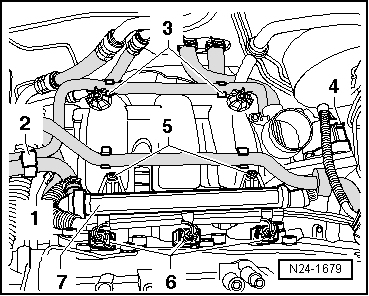| –
| Connect a contact of the valve to the earth terminal of the battery. |
| –
| Then connect the second contact of injector to the remote control. |
| –
| Connect the clamp to the positive (+) pole of the battery. |
| –
| To protect the battery positive (+) and fuse holder, connect using the test lead and adapter cable -V.A.G 1348/3-2-. |
| The fuel supply unit must run. |
| –
| Activate remote control for 30 seconds. |
| –
| Repeat the check on all other injectors. Always use a new measuring container. |
| –
| Once all injectors have been actuated, place the measuring container on a flat surface. |
| –
| Disconnect the voltage supply of the fuel delivery unit. |
| –
| Compare the injected quantities. |
| Specification: 85 ... 91 ml per injector. |
| If the measured values of one or more injectors are above or below the prescribed specifications: |
| Fit the injectors in the reverse order of removal. Note the following: |
| t
| Renew O-rings on all injectors and lightly moisten with clean engine oil. |
| t
| Fit fuel rail with secured injectors onto intake manifold and press in evenly. |
|
|
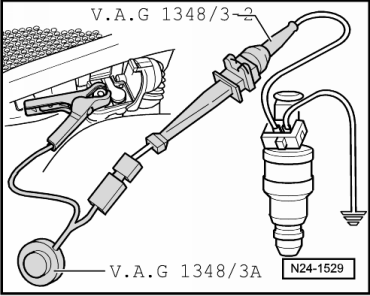
|
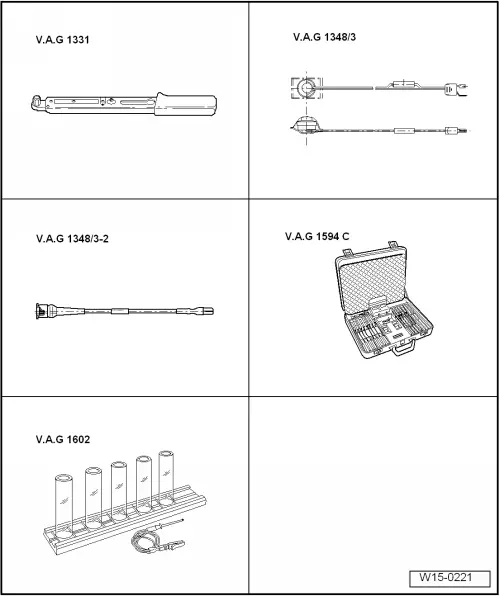
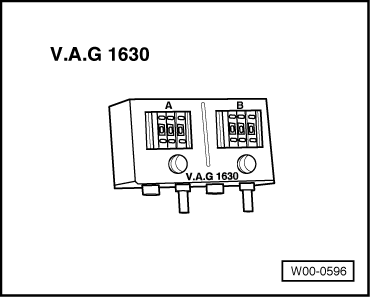
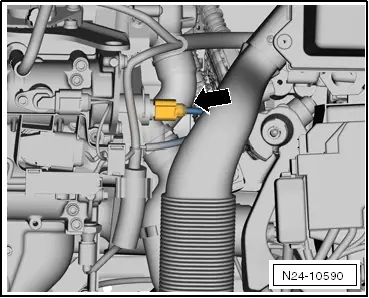
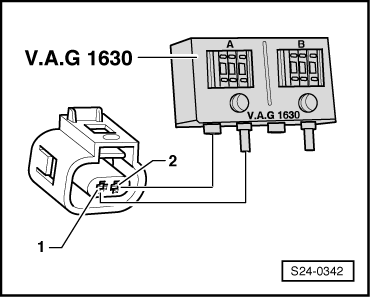
 Note
Note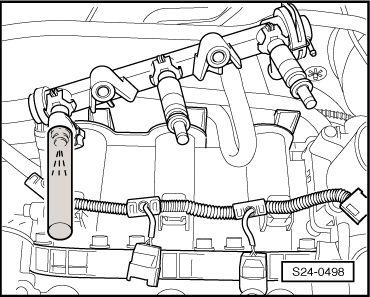


 WARNING
WARNING